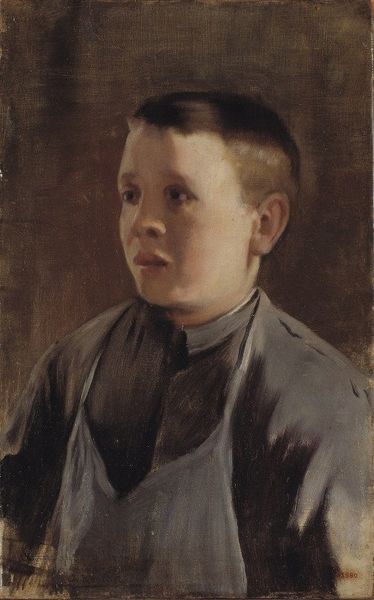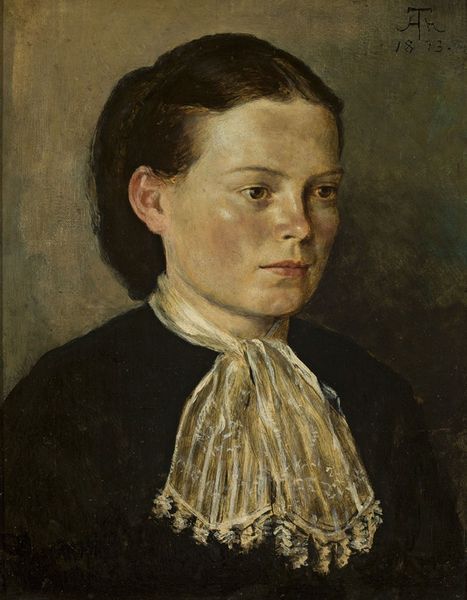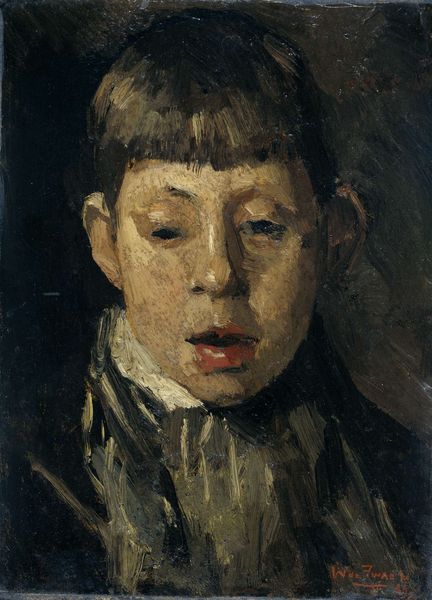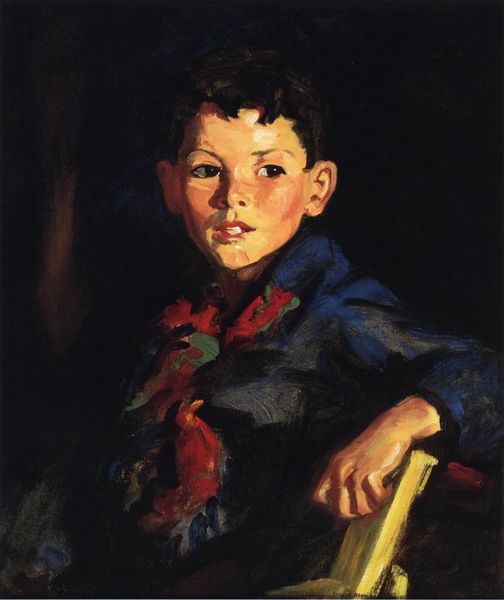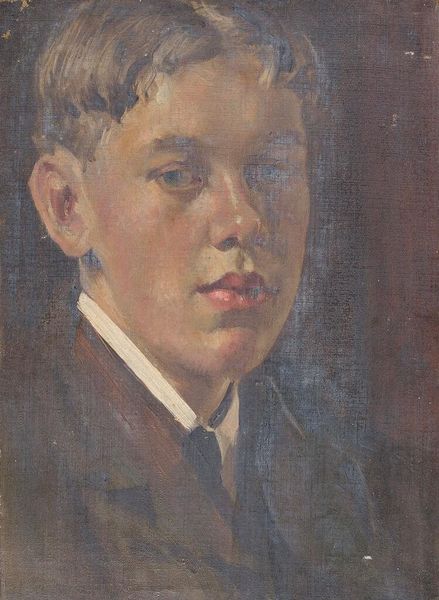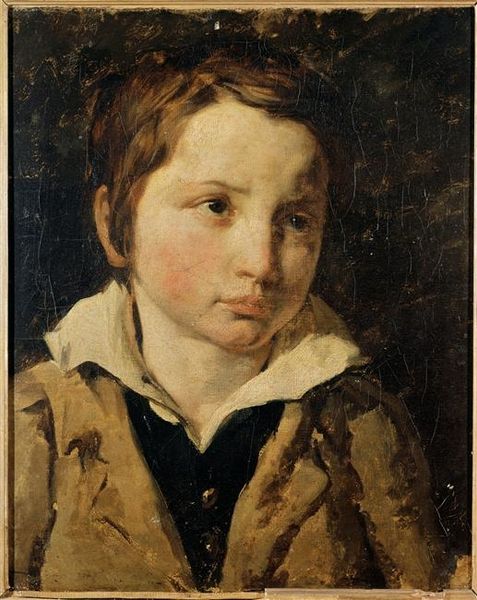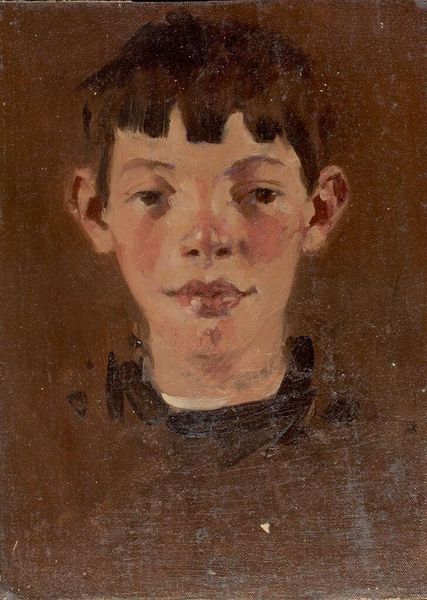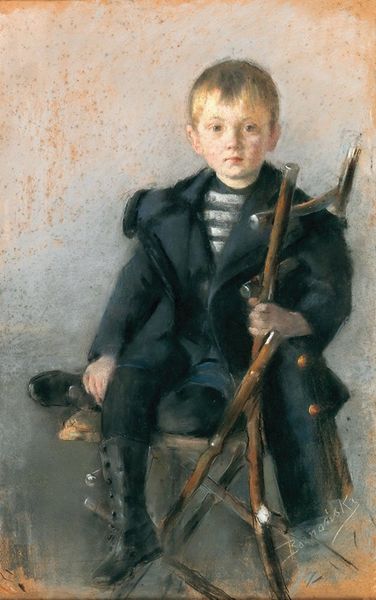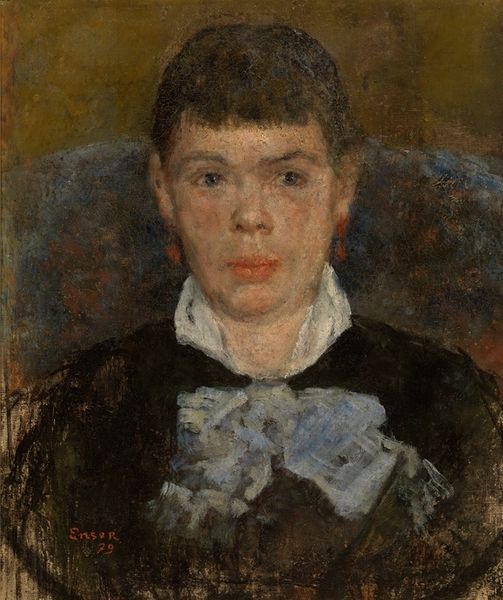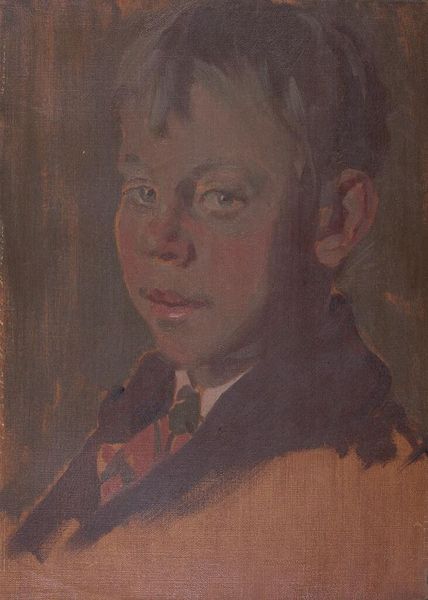
oil-paint
#
portrait
#
figurative
#
oil-paint
#
oil painting
#
ashcan-school
#
realism
Copyright: Public Domain: Artvee
Editor: Here we have an oil painting called "The Newsboy" by George Bellows, its exact creation date is unknown. The boy's gaze is so direct; there's a kind of defiance mixed with vulnerability that really strikes me. What do you see in this piece beyond just a simple portrait? Curator: It’s a compelling image, isn't it? Bellows was part of the Ashcan School, a movement dedicated to depicting everyday life, particularly the lives of the urban working class. Considering the social and economic context of the time, this isn't just a portrait; it's a representation of child labor, poverty, and the gritty realities faced by many young people. This boy is selling newspapers, contributing to his family's survival, and Bellows confronts us with that reality head-on. Do you think his expression hints at the hardships he's enduring? Editor: That's fascinating. I hadn’t really thought about the social commentary aspects beyond it being a realist painting. Now that you mention it, there is something more profound happening with the subject's direct gaze, sort of a forced maturity brought on by circumstance. Curator: Exactly. Bellows isn’t romanticizing poverty, instead the gaze challenges our assumptions. It invites us to consider the systemic inequalities that push children into the workforce, stripping them of their childhood. Does that understanding shift how you perceive the visual composition, the darker tones? Editor: Absolutely. Knowing the social context illuminates how Bellows uses realism to convey a powerful political message about societal issues. I will never see paintings the same way again. Curator: Indeed. Art can be such a profound tool when it encourages questions about identity and societal inequities.
Comments
No comments
Be the first to comment and join the conversation on the ultimate creative platform.


